Cautiously, my husband Gary, our friend Michael, and I followed a nearly invisible path through the fog and up the side of Loughcrew hill, just before sunrise. A huge crow—perhaps a raven—flew by, its wings flapping loudly in semi-darkness. We were heading to the ridge top to see a twice-a-year spectacle: the rays of the equinox sunrise penetrating the passageway of Cairn T, a 5,500-year-old megalithic tomb situated 52 miles northwest of Dublin. The equinoxes, which occur around March 21 and September 21, are the two times of the year when the days and nights are of equal length.
All in Spirituality
Meeting the Buddha in Sedona
story + photos by Suzanne Marriott
My husband was lying in the hospital bed, dying. It wasn’t as if I should be surprised—he had been in and out of hospitals many times that year, suffering from complications of multiple sclerosis. Yet, I was. I was in shock.
I had been his caregiver for the last ten years, and now, at the time of his death on January 1, 2006, I couldn’t stop. I still had to take care of him. Less than a minute after he drew his last breath, I began reading a Tibetan Phowa, or prayer, to Amatabha Buddha to guide Michael’s transition. It was a long and beautiful poem that guided him as he experienced the stages of death and the many levels of transition. Amitabha is a Sanskrit word that literally means boundless light and boundless life. He is the Buddha in the Land of Ultimate Bliss (Pure Land), in which all beings enjoy unbounded happiness. He can provide a “short cut” to enlightenment. By reading this phowa, I felt still connected to Michael, still able to care for him.
Nearly six years after my husband’s death, I hardly expected to meet Amatabha Buddha again in Sedona, Arizona, and this was not the only surprising thing that happened there.
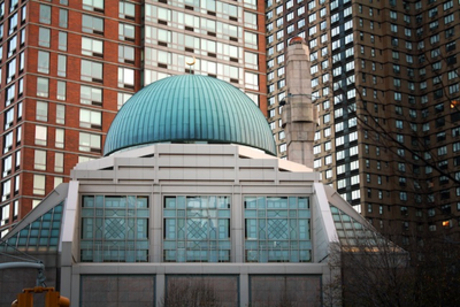 I had been struggling with my prayer life, figuring out where and how I could have some peace and quiet in the Big Apple. I tried to petition and call on God, but the words wouldn't come. I wondered, “If a city never sleeps, how does it ever dream? How do its people ever come to a solemn state of rest?” My father, a Christian of no particular denomination, suggested I visit a mosque and learn from the Muslims.
I had been struggling with my prayer life, figuring out where and how I could have some peace and quiet in the Big Apple. I tried to petition and call on God, but the words wouldn't come. I wondered, “If a city never sleeps, how does it ever dream? How do its people ever come to a solemn state of rest?” My father, a Christian of no particular denomination, suggested I visit a mosque and learn from the Muslims.
“Watch them pray,” he said, “Their discipline and devotion is admirable. Watching them pray at the exact same time every day was one of my favorite things about living in the Middle East.”
I say I am a well-traveled Filipina, but that only means I have made countless layovers on flights to and from New York. The most traveling that I have ever done is through reading books, therefore I have great expectations of places I have yet to see. I hear “India” and I think saris in vibrant colors, citrus rinds covering a plate of curry, or yogis in lotus position. I hear “Rio de Janeiro” and I think futbol, futbol, futbol!
When I hear the word “mosque,” a flipbook of ideas, images, sounds, and even smells pop into my head. I let my mind cruise through this Rolodex as I sit in the Pelham-bound 6 train. Here I am, a young Protestant raised in a Catholic country, managing all the thoughts sweeping through my head as I near the New York Mosque. I straighten my spine and fix my hair as I get off the train, forcing myself to be, or seem to be, more reverent than I usually am.
A year ago, I met Belen Stoneman, a Native American from the Akimel O’otham of the Hohokum tribe. She was a spa therapist and resident “healer.” at the Sheraton Wild Horse Pass Resort & Spa in Chandler, Arizona, and happened to be at a spa event in New York. As I walked by, she stared at my beaded moccasin boots, which look as though they were made on a reservation, but are actually from New York. “I like your boots,” she smiled.
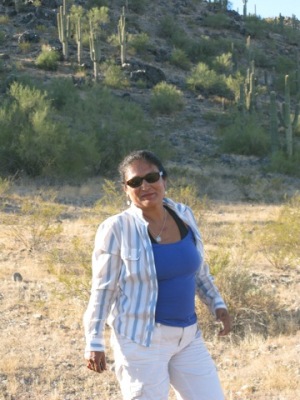
One of my college professors had told me I was psychic, a gift, he said, I should develop in a positive way. I hadn’t been aware of such a talent nor did I know to tap into it. Years later, a cigar-smoking Shaman on the Amazon River told me I had special powers. I almost believed him, until he told the next person in line exactly the same thing.
Belen indicated I should sit on a stool. How would she do the reading? Animal cards? Feathers? She picked up a pen and sheet of paper, closed her eyes, and moved the pen around the paper as if in a trance, drawing squiggly circles, star shapes, and curlicues. She opened her eyes, studied the design, and said, “I have a spiritual guide named White Cloud. He directs me and sends me messages. White Cloud says you can see things other people can’t. White Cloud says we played together as children.”
I felt a small tingle. Did that mean that in a former life – if there was such a thing – I was Native American? Is that why I always rooted for the Indians and not the cowboys?
“White Cloud says you are very comfortable in the mountains,” she continued.
“I love mountains,” I said.
“My people lived in the mountains, and the spirits of my ancestors still live there.”
New Life in the Yucatan
words + photos by Suzanne Marriott
When my husband, Michael, died on January 1st, 2006, I felt as if I had died, too. The light went out of my life. It was as if I were a candle and he were the flame, and his last breath had blown out that flame and left me alone in the dark. 
Yet, for some reason unfathomable to me, my life went on, though I saw no reason why it should. No longer able to make sense of my world, I began to rely more and more on my intuition.
A little over a year after his death, in March of 2007, I was sitting on my living room couch, reading my copy of Spirituality&Health magazine. Suddenly, an announcement for a workshop on travel writing jumped off the page. I’d always loved to write and to travel, and here was a way I could do both. The workshop was to be held in the beautiful but “undiscovered” southern Yucatan peninsula in Mexico near Belize. There was no reason in the world why I shouldn’t go, I thought to myself. Did I dare? Did I have the energy? Probably not, I decided. This was crazy.
The Black Virgin of Rocamadour
words + photos by Elyn Aviva
She called to me just as I was falling asleep, exhausted from too much travel. We had had a long, twisting drive to reach her sanctuary, perched on the side of a sheer bluff in the Lot region in southwestern France. My husband, Gary, and I had gone to bed early, around 9:30 p.m., too tired to enjoy a night stroll through the tiny medieval village of Rocamadour, which sheltered her chapel.
I was almost asleep when I heard her loud and clear, as if she were standing next to me. “Get up!” she commanded. “Come visit me in my sanctuary! That’s what you’re here for!”
I groaned. I was tired. Besides, I’d already visited the Black Virgin of Rocamadour in her sanctuary just a few hours earlier, right after we had arrived, because we’d been told her chapel would close at 7:30 pm.
I turned to Gary, lying next to me in bed. “She’s calling me.”
“What?” He mumbled.
“The Lady is calling me to visit her. You want to come?”
He muttered something. Then, “You go ahead.”
Suddenly energized, I sprang out of bed and got dressed. After all, when the Goddess calls you, you have to go. I knocked at the room next door where our friend Anne was staying. I knocked again, louder. After a few minutes she opened the door, looking sleepy.
“The Black Virgin is calling me to go to her. Want to come?”
She nodded. “Give me a minute.”
Soon we were on a night-time pilgrimage to the Goddess, walking through the silent, deserted streets, climbing the 223 steps of the Grand Staircase that lead up to her cliff-side sanctuary. We followed the Rue de la Mercerie to a small square, the Parvis de St-Amadour, center of the holy precinct. Then we walked up to the upper landing and stood in front of the chapel doors. They were locked.
I shook my head, disappointed. “I know we were told the sanctuary would be closed, but I’m sure the Black Virgin told me to come and see her.” Maybe it had just been a daydream, I thought, or a moment of confusion as I drifted off to sleep….
The Camino de Santiago: An Inner and Outer Journey
by Elyn Aviva
I first heard about the Camino de Santiago in 1981 from my friend Michael, when I was looking for a topic for my Ph.D. in cultural anthropology. Michael idly mentioned there had been an important medieval pilgrimage road in Spain and suggested I look for it—I might find its art and architecture of some interest.
In the summer of 1981 I arrived in Spain, still looking for a topic for anthropological fieldwork. I ended up in Sahagún, a small town in the north-central province of León, where I stayed at the Benedictine nuns’ guesthouse.
I have decided to celebrate the end of every Mercury Retrograde. And might I suggest you do the same?
What is “Mercury retrograde”?
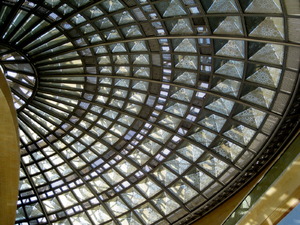 Astrologers say the planet Mercury rules communication and transportation. They call a planet “retrograde” when it gives the illusion that it’s moving backward through the zodiac. Mercury’s retrograde can negatively affect attempts to communicate or travel; appointments; contracts; mail; and Internet. It’s said to be the worst time to sign a contract, start a love affair or new job. It lasts three weeks. More or less.
Astrologers say the planet Mercury rules communication and transportation. They call a planet “retrograde” when it gives the illusion that it’s moving backward through the zodiac. Mercury’s retrograde can negatively affect attempts to communicate or travel; appointments; contracts; mail; and Internet. It’s said to be the worst time to sign a contract, start a love affair or new job. It lasts three weeks. More or less.
Mercury Retrograde (MR) happens approximately every three months, three or four times a year. In 2009, we got hit four times. This year, we have only three to look forward to.
When I first left home, I moved into a Boston house with some astrologers. From time to time, they’d call out, “Mercury is retrograde! Nobody can communicate!” I saw them as Cosmic Chicken Littles. I thought they were a scream.
I started paying attention after my father died at the end of ’84 during an MR. His heart acted up during a trip in an RV with his wife, and he passed away days later in a Florida hospital. I woke up to a Voice Mail from my brother saying, “Dad’s brain waves have stopped.” Dad’s siblings noted it was “inconvenient” to have a funeral so close to Christmas, and put it off till January. I was in L.A., editing the last film project I had to do, getting ready for finals at USC. I heard later that Dad’s sister attended a December memorial service that my stepmom hosted, and took the Rabbi aside, asking him not to “say anything Jewish” because the friends attending were Gentiles.
I have only two words for them: “Mercury Retrograde.”
To travel or not to travel?
My friends who travel refuse to put much stock into my Cosmic Chicken Little warnings. “Well, I have to go,” they say. “So I’m going.” Afterward, they laugh as they give details of what went wrong. Usually nothing major. Lost luggage. Delayed flights. A basic pain in the Cosmic-Keester. But do-able.
words + photos by Elyn Aviva
It was a light and stormy night in late June, 2006, the second light and stormy night since we had arrived at the edge of nowhere. We had traveled for days to reach the Isle of Lewis, most northern isle of the Scottish Western Isles, to witness a rare astronomical event called the Lunar Standstill. Raw and rough, the wind felt as if it had blown in from around the world—and it had, for there was nothing in the Atlantic to slow it down.
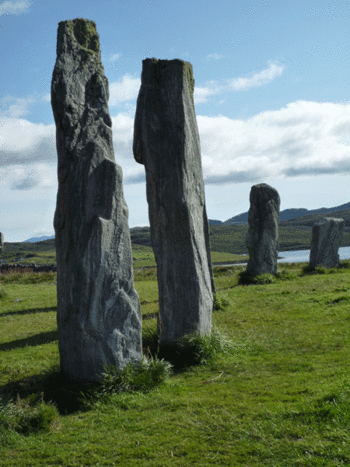 We had journeyed by bus and ferry and car to stand before the Standing Stones of Calanais (aka Callanish), to participate in the once-every-18.61 years Lunar Standstill. The pale sun would set around 11 pm, and then the full moon would skim the southern horizon, go behind Sleeping Beauty Hill, and come out again—giving the appearance of a double rising—and shine between two tall stones in the central stone ring. Archeo-astronomers believe this marking of the movements of the moon gave the builders important power 5000 years ago.
We had journeyed by bus and ferry and car to stand before the Standing Stones of Calanais (aka Callanish), to participate in the once-every-18.61 years Lunar Standstill. The pale sun would set around 11 pm, and then the full moon would skim the southern horizon, go behind Sleeping Beauty Hill, and come out again—giving the appearance of a double rising—and shine between two tall stones in the central stone ring. Archeo-astronomers believe this marking of the movements of the moon gave the builders important power 5000 years ago.
Calanais consists of a slightly squashed central ring, four radiating stone arms, and an underground, box-shaped cairn. The central megaliths stand 8-12 feet high, their uneven silhouettes resembling a Rorscharch test. Was it a temple? A cemetery? A community center? A calendar? Nobody knows for sure. The silent stones reveal their purpose slowly, if at all.
We couldn’t wait to see the Lunar Standstill, but wait we had to. The night before, icy rain had ruined our chances. We hoped for better the second night, but the moon had coyly disappeared behind a layer of clouds, only occasionally peeking out. The event was taking place right before our eyes, but we couldn’t see it.
We had been drawn to this desolate distant land because we wanted to experience what the ancients had experienced (whatever that might have been) millennia ago. We were not alone in that desire. Shivering dreadlocked tie-dyed youth chanted and drummed to the moon, equally determined to have an experience. Nor were we and they the only watchers on that wild and windy night. A choir of Church of Scotland youth clung together, courageously singing “Amazing Grace” against the encroaching pagan forces. As if intimidated by such competing claims, the moon scuddled behind another back-lit cloud and stayed there.
At the end of the stone-lined path that led north from the ring of monoliths, a group of blanket-wrapped elders sat on chairs, impatient with those who blocked their view back down the aisle. Oblivious to their muttered complaints, a photographer set up his tripod in front of them. He pointed his camera toward Sleeping Beauty, waiting for a momentary glimpse of the moon gleaming between two grey and glistening stones. They looked like giant fingers pointing at the sky.
words + photos by Elyn Aviva
Souls in the form of lizards and snakes slither their way to the seashore sanctuary of San Andrés de Teixido in northwestern Spain. At least that’s what local Galician folklore claims about this hard-to-reach pilgrimage shrine, perched on a cliff on the Costa da Morte. “If you don’t go there before you die, you’ll have to go there afterwards”—or so the legends assert. So why not go now, I thought to myself? It would certainly be simpler and more convenient. Besides, I was intrigued by these Celtic-tinged stories of transmigration of souls in what appears to be a deeply Catholic country.
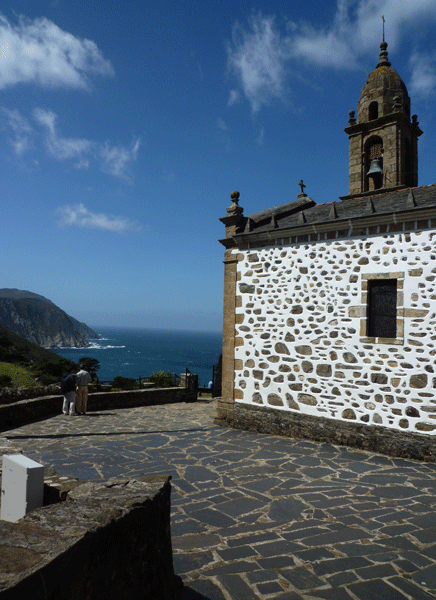 Rather than slither, I went by car, wending my way up and around curvaceous roads shaded by huge eucalyptus trees that swayed in the strong Atlantic breeze. Their medicinal scent filled the air. I pulled over near a TV repeater tower to walk a short stretch of the original pilgrims’ path, careful not to kill any insects I encountered en route—after all, they might be souls on pilgrimage. Or so the legend goes.
Rather than slither, I went by car, wending my way up and around curvaceous roads shaded by huge eucalyptus trees that swayed in the strong Atlantic breeze. Their medicinal scent filled the air. I pulled over near a TV repeater tower to walk a short stretch of the original pilgrims’ path, careful not to kill any insects I encountered en route—after all, they might be souls on pilgrimage. Or so the legend goes.
At last I reached the tiny village of San Andrés and left the car in the large parking lot at the outskirts. I strolled down the narrow lane lined with souvenir stands selling wax ex-votos in the shape of body parts, brightly painted hard-baked bread-dough offerings, and tiny bundles of hierba de enamorar, a local pink flower that is supposed to be a love potion. Something for everyone, I thought. But was there anything here for me?
Around a bend I came to the white-washed sanctuary that guards the relics of the apostle San Andrés (Saint Andrew). The church was surprisingly small, given the size of the folklore that surrounds it. Legend says that San Andrés was distressed because so few pilgrims visited his isolated shrine, so he complained to Christ; Christ felt sorry for him and promised that nobody would enter heaven if they hadn’t gone first to San Andrés de Teixido. It was a great marketing ploy, judging by the popularity of the shrine over the last 400 years.
by Katya Miller
The Hamsa caught my eye early in my formative years as a jeweler, symbolist, and amulet maker. It was much more exotic than the Star of David that represented Judaism. It evoked a middle eastern world of colorful clothing, sacred architecture and the three faiths of Jerusalem, but I didn’t understand how it related to my own beliefs. I knew it was an abstract hand shape, inverted with thumb and pinky pointing outward and similar to the many such indigeneous hand designs in cultures worldwide.
 The Khamsa, (in Arabic: Khamsa means “five”) is an icon in amulets, charms, and jewelry, to protect against bad eyes. The Islamic name for the charm is the Hand of Fatima or Eye of Fatima, referring to Fatima Al-Zahra'a, Prophet Muhammad’s small and most beloved daughter. She married Ali, the son of Abu Taleb who was especially loved by Mohammad as the first one who accepted him. Only from her Mohammed had grandchildren and all of her sons were important leaders. She is very important in the Shiite Islam and there only her descendants can be Khalifs. Many girls are named Fatima, meaning a rose, considered holy. She must have had healing hands.
The Khamsa, (in Arabic: Khamsa means “five”) is an icon in amulets, charms, and jewelry, to protect against bad eyes. The Islamic name for the charm is the Hand of Fatima or Eye of Fatima, referring to Fatima Al-Zahra'a, Prophet Muhammad’s small and most beloved daughter. She married Ali, the son of Abu Taleb who was especially loved by Mohammad as the first one who accepted him. Only from her Mohammed had grandchildren and all of her sons were important leaders. She is very important in the Shiite Islam and there only her descendants can be Khalifs. Many girls are named Fatima, meaning a rose, considered holy. She must have had healing hands.
An alternative Jewish name is the Hand of Miriam, in reference to Miriam, the sister of Moses and Aaron. It is a kind of "protecting hand" or "hand of God". The Jewish silversmiths who lived and worked in Morocco and other Arab countries before settling in Israel, adapted it as their own symbol over the years and sometimes put a six pointed star in the palm for religious identity. With an eye in the palm, they say it protects against “the evil eye.” Some associate the significance of the five fingers to the five books of the Torah for Jews, the Five Pillars of Islam for Sunnis, or the five People of the Cloak for Shi'ites. It can be seen all over the Arab nations, and is popular as charms and decorations in Israel’s markets as wall plaques, mobiles, keychains and necklaces. Among Jews, many hamsas are also decorated with fish images, considered to be a symbol of good luck and sometimes they are inscribed with Hebrew prayers, such as the Sh'ma, the Birkat HaBayit (Blessing for the Home), or the Tefilat HaDerech (Traveler's Prayer).
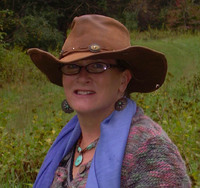 Rachel E. MannI could write about my two trips to the former Soviet Union, the first during the time it was being speculated by the old Sovietologists that Andropov had died because he was no longer showing up in Politburo photo shoots, and the second the summer of the coup when a drunk Yeltsin danced on a tank in front of the White House in Moscow. These are among a number of outer trips in my life. But for me, the outer journeys are just juicy manifestations of a bigger and far more important inner journey that led me to becoming a reluctant shaman.
Rachel E. MannI could write about my two trips to the former Soviet Union, the first during the time it was being speculated by the old Sovietologists that Andropov had died because he was no longer showing up in Politburo photo shoots, and the second the summer of the coup when a drunk Yeltsin danced on a tank in front of the White House in Moscow. These are among a number of outer trips in my life. But for me, the outer journeys are just juicy manifestations of a bigger and far more important inner journey that led me to becoming a reluctant shaman.
Just declaring in a public forum that I am a shaman takes the breath out of me. To say that my life is a trip may actually be an understatement. I mean, I think it’s a truly crazy trip when you realize you suffer from Post Traumatic Stress Disorder (PTSD), depression and a chronic pain condition called fibromyalgia and simultaneously you suddenly find yourself meeting spirits who come to help you, or you are wandering in the Underworld where you meet and retrieve lost parts of yourself, and you encounter the traumas of your ancestors and even the world as a whole. In the process, I have met some interesting and amazing men and women, in this more ordinary realm of life, some of them whom I call the “new shamans” of the West.




